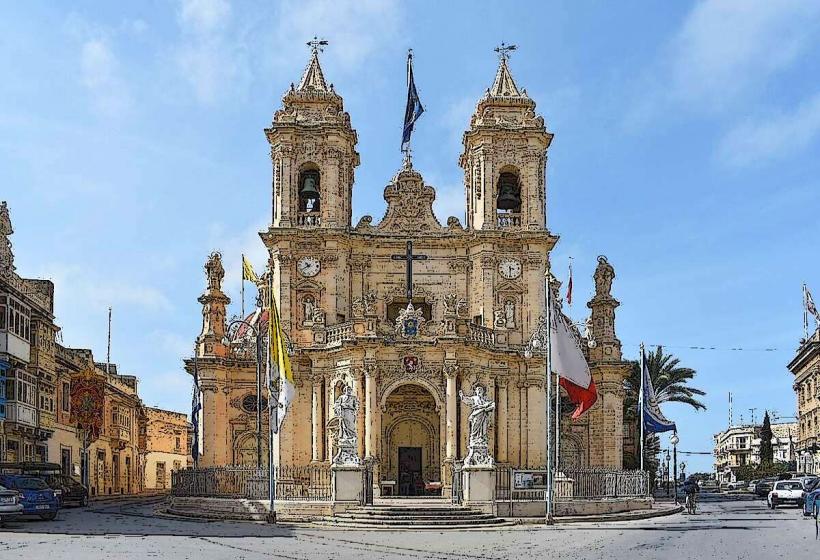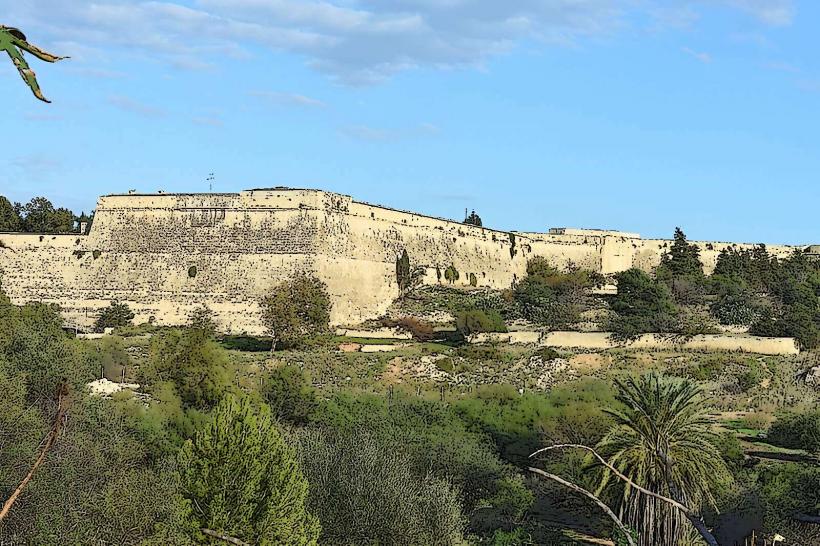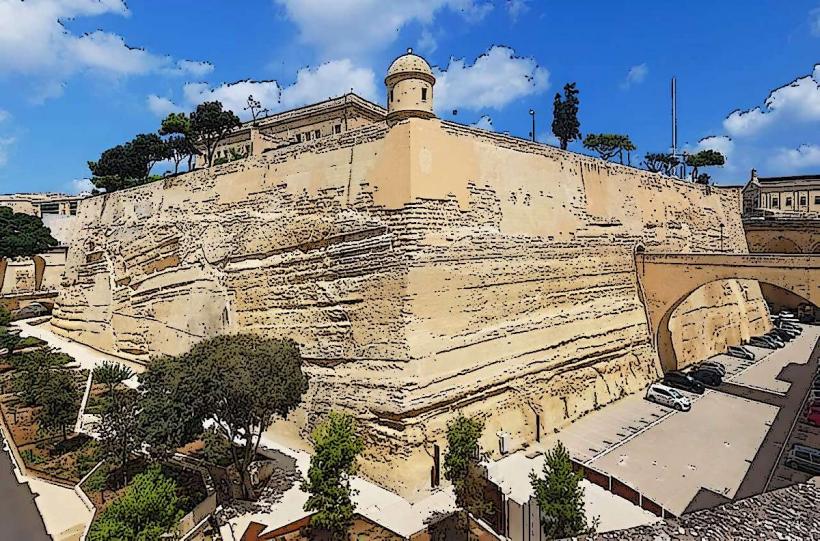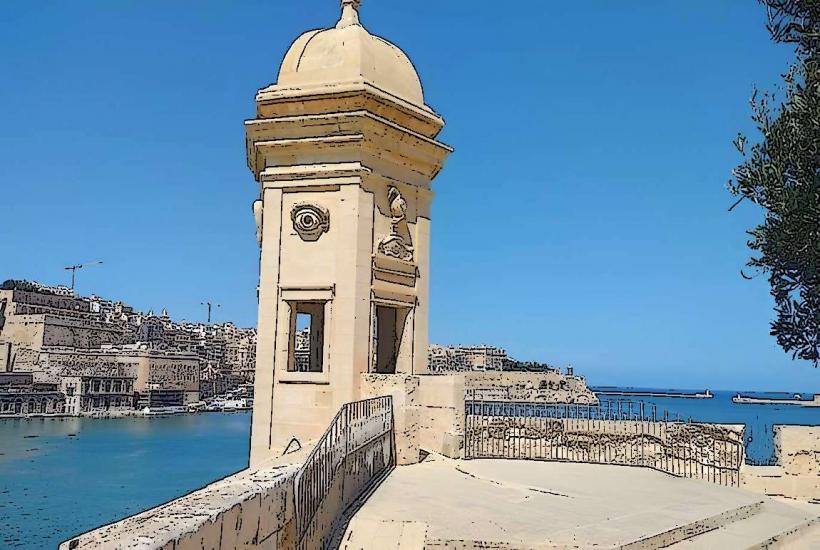Information
Landmark: Hompesch GateCity: Zabbar
Country: Malta
Continent: Europe
Hompesch Gate
Hompesch Gate is a historical gate located in the town of Żurrieq, in the southern part of Malta. This gate is significant for its role in Malta’s military history, specifically during the time of the Knights of St. John, and it stands as a noteworthy example of Malta's Baroque-style fortifications.
Historical Background
Construction and Purpose:
Hompesch Gate was built during the 18th century, specifically around 1797, during the reign of Grand Master Ferdinand von Hompesch. The gate was part of a series of fortifications built by the Knights of St. John to strengthen the defenses of various towns on the island. It was named after Ferdinand von Hompesch, the Grand Master of the Order of St. John at the time, who oversaw the construction of many military and defensive works.
Strategic Importance:
Located in the southern part of the island, Hompesch Gate was a vital part of the defense system for the town of Żurrieq and surrounding areas. It provided a key access point to the town and helped to protect it from potential invaders. The gate is strategically located near the Hompesch Bastions, which were also constructed during the same period to protect Żurrieq and the surrounding countryside from attack.
Role in the French Occupation:
During the French Occupation of Malta (1798–1800), the gate played a role in controlling access to the town and the surrounding area. The French forces took control of the island, but the fortifications, including Hompesch Gate, remained an important element in the military struggles during this time.
Architectural Features
Baroque Style:
Like many of Malta’s fortifications built by the Knights of St. John, Hompesch Gate is built in the Baroque style. The gate features a grand arched entrance, which was a common design for military gates of the era. The Baroque style is characterized by ornate detailing and a sense of grandeur, even in military architecture.
Decorative Elements:
The gate has elements of Baroque architecture, with features such as decorative stonework, which served both functional and aesthetic purposes. The gate also has an inscription commemorating its construction and the era of Grand Master Ferdinand von Hompesch.
Structure:
The gate itself is relatively simple in design compared to other larger city gates, but it still retains the defensive features necessary to protect the town of Żurrieq. The structure includes thick walls and a large, imposing arch that would have once been closed by heavy gates, which could be raised or lowered for access.
Cultural and Modern Significance
Preservation Efforts:
Hompesch Gate has been preserved as an important historical monument. Efforts have been made to restore and maintain it, ensuring that it remains part of Malta’s historical and cultural heritage. It is one of the few remaining gates from the Knights’ era in the southern part of the island.
Local Heritage:
The gate holds significant meaning for the local community in Żurrieq and surrounding areas. It is often associated with the history of the Knights of St. John and the role of Żurrieq in Malta’s defense during the 18th century.
Tourism:
Although Hompesch Gate is not as famous as some of the more prominent gates in Valletta or the Three Cities, it remains an interesting historical site for visitors to Malta. Those interested in the Knights of St. John and military history often visit the gate as part of tours in the southern region of Malta, which also includes other nearby landmarks such as the Hompesch Bastions and the town of Żurrieq.
Nearby Attractions
Blue Grotto:
Located near Żurrieq, the Blue Grotto is a series of sea caves that are famous for their stunning blue waters, which are particularly beautiful when the sunlight hits the water at certain times of the day. Visitors can take boat trips to explore the grotto and enjoy its natural beauty.
Ħal Saflieni Hypogeum:
A short drive from Żurrieq, the Ħal Saflieni Hypogeum is a UNESCO World Heritage Site. This underground prehistoric burial site dates back to around 4000 BC and is one of the most significant archaeological sites on the island.
Hagar Qim and Mnajdra Temples:
These ancient megalithic temples, located near the town of Qrendi, are among the oldest freestanding stone structures in the world. They are an essential part of Malta's prehistoric history and a must-visit for those exploring the island's ancient heritage.
Marsaxlokk:
The picturesque fishing village of Marsaxlokk is nearby and famous for its colorful boats, known as luzzus, and its vibrant Sunday fish market. It is a perfect spot for visitors looking to experience Malta’s traditional fishing culture and enjoy fresh seafood by the sea.
Visiting Hompesch Gate
Access:
Hompesch Gate is located in the Żurrieq area, just a short distance from the main roads that connect the southern towns of Malta. It is accessible by car or public transport, and its location near other historical sites makes it easy to visit as part of a broader tour of southern Malta.
Best Time to Visit:
The best time to visit is during the mild spring or autumn months, when the weather is comfortable for walking and sightseeing. Summer months can be quite hot, so visitors should plan accordingly.
Guided Tours:
While there is no dedicated visitor center at Hompesch Gate, there are guided tours available in the area that include the gate as part of a broader exploration of the historical towns and fortifications in the southern part of Malta.
Conclusion
Hompesch Gate stands as an important historical monument that reflects Malta’s rich military history and the Baroque architecture of the Knights of St. John era. Though smaller than some of Malta’s other gates, it remains a key feature of Żurrieq’s heritage and is a testament to the island’s strategic importance throughout the centuries. For those visiting the southern part of Malta, Hompesch Gate is an essential stop, offering insight into Malta’s defensive past and its historical role during the Knights period.





